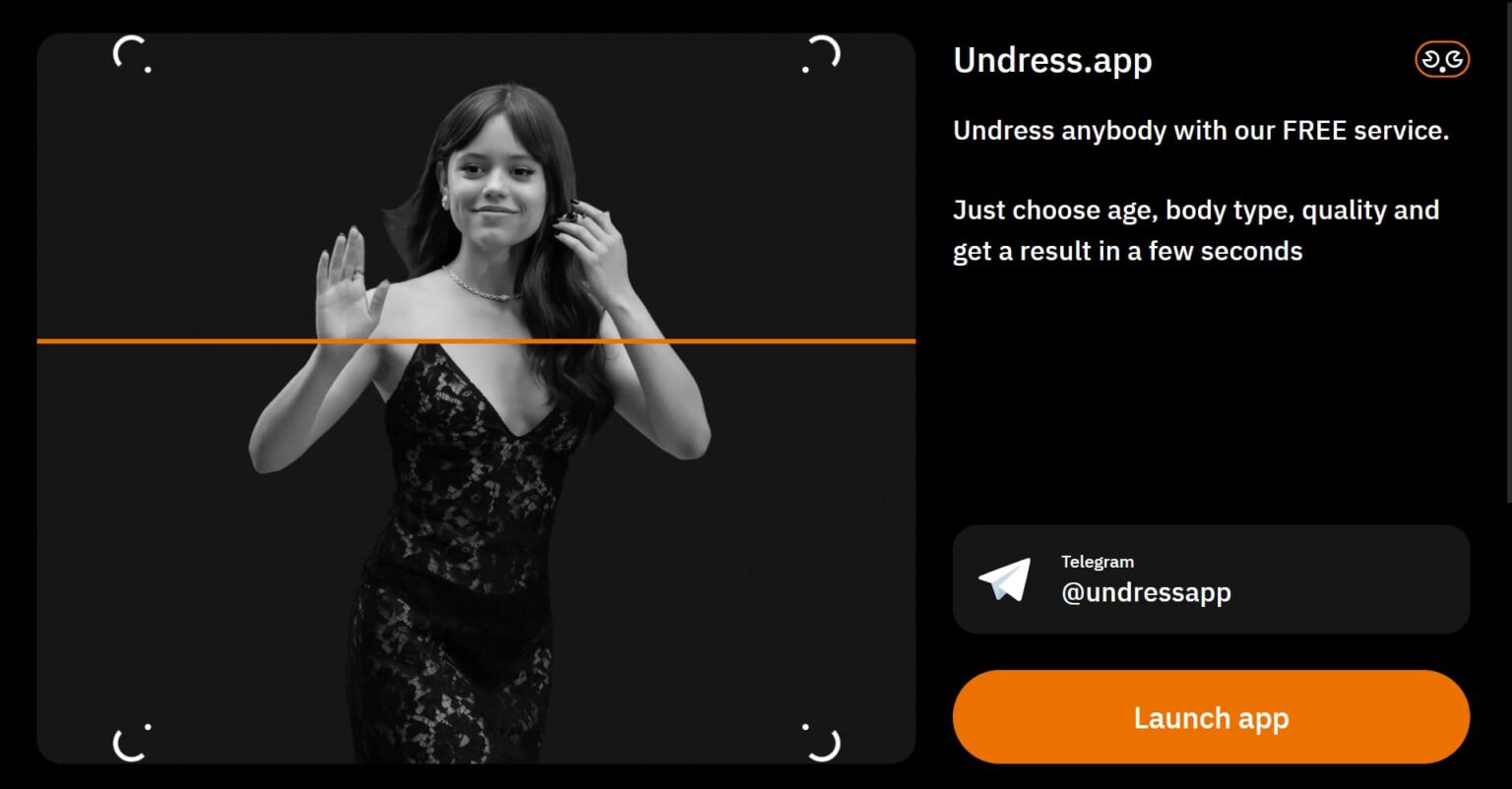The Comprehensive Guide To Understanding The Undress Tool
The concept of the "undress tool" may sound intriguing to many, especially in a digital age where technology continuously evolves to offer innovative solutions. Whether you're a tech enthusiast or someone simply interested in learning about new tools, understanding what the undress tool is, its uses, and implications is vital. This tool has sparked conversations due to its unique capabilities and the ethical considerations it presents. In this comprehensive guide, we aim to shed light on the various aspects of the undress tool, helping you grasp its essence and potential applications.
As we delve deeper into the world of the undress tool, it's essential to acknowledge the curiosity and questions that surround it. What exactly does this tool do? How is it being used in today's world? These are just a few questions that arise when discussing the undress tool. By exploring these inquiries, we aim to provide clarity and insights into its functionality and the broader implications it holds in both technological advancements and ethical considerations. Our exploration will help demystify this tool and offer a balanced perspective on its potential benefits and risks.
The undress tool, like many technological innovations, comes with its own set of challenges and debates. While it offers unique capabilities that can be harnessed for various applications, it also raises significant ethical and privacy concerns. This guide not only seeks to explain the technical aspects of the tool but also to provide a platform for discussing its impact on society. By the end of this article, you will have a comprehensive understanding of the undress tool, enabling you to form your own informed opinions about its place in the modern world.
Read also:Ryan Paevey Partner A Closer Look At Love And Life
Table of Contents
- What is the Undress Tool?
- How Does the Undress Tool Work?
- Applications of the Undress Tool
- Ethical Considerations
- Is the Undress Tool Legal?
- Impact on Society
- How to Use the Undress Tool Safely?
- Can the Undress Tool be Used for Good?
- Alternatives to the Undress Tool
- Future of the Undress Tool
- Common Misconceptions About the Undress Tool
- What Are the Risks?
- How to Prevent Misuse?
- Case Studies
- Expert Opinions
What is the Undress Tool?
The undress tool is a software application designed to manipulate digital images. Its primary function is to alter images in a way that can simulate the removal of clothing from individuals in the picture. This tool uses advanced algorithms and image-processing techniques to achieve its effects. The undress tool has gained notoriety for its controversial capabilities, sparking debates about privacy, consent, and digital ethics.
How Does the Undress Tool Work?
At the core of the undress tool's functionality is its use of artificial intelligence and machine learning. By analyzing thousands of images, the tool learns patterns and can predict how to modify an image to achieve the desired effect. It relies on complex algorithms that can identify clothing and recreate the underlying body structure, which often leads to realistic-looking results. Despite its technical sophistication, the tool raises significant ethical questions regarding privacy and consent.
Applications of the Undress Tool
While the undress tool is often associated with unethical uses, it can be applied in legitimate fields such as fashion, art, and education. For instance, fashion designers may use the tool to visualize how different clothing designs fit on models without physically dressing them. In art, it might be employed to explore creative expressions and concepts. However, these applications are overshadowed by the potential for misuse, emphasizing the need for ethical guidelines in its deployment.
Ethical Considerations
The ethical implications of the undress tool cannot be understated. Its ability to manipulate images raises concerns about consent and privacy, as individuals may have their images altered without permission. This not only invades personal privacy but also contributes to the spread of misinformation. The tool's potential to create non-consensual explicit content is a significant ethical challenge, necessitating discussions on legal frameworks and responsible use.
Is the Undress Tool Legal?
Legality surrounding the undress tool varies by jurisdiction. In some regions, using such tools to create explicit content without consent is considered illegal and punishable by law. However, the rapid evolution of technology often outpaces legislation, creating gray areas in legal enforcement. Users must be aware of their local laws and the potential legal consequences of using the tool inappropriately.
Impact on Society
The societal impact of the undress tool is profound. On one hand, it represents a leap in digital manipulation technology; on the other, it poses risks to personal privacy and societal norms. The tool's ability to alter reality blurs the line between fact and fiction, potentially leading to trust issues in digital media. Its existence prompts important conversations about digital literacy and the ethical responsibilities of both creators and consumers of digital content.
Read also:Guidelines To Undress Her A Respectful Approach
How to Use the Undress Tool Safely?
Using the undress tool safely involves adhering to ethical guidelines and legal requirements. Here are some tips for responsible use:
- Ensure you have explicit consent from individuals whose images you intend to alter.
- Be aware of the legal implications of using such tools in your jurisdiction.
- Use the tool for legitimate purposes, such as art or fashion, and avoid any form of exploitation.
- Educate yourself and others about the ethical considerations and potential impacts of image manipulation.
Can the Undress Tool be Used for Good?
Despite its controversial nature, the undress tool can have positive applications when used responsibly. In the fashion industry, designers can experiment with styles and fits without physical prototypes. In education, it can serve as a tool for teaching digital ethics and the impact of image manipulation. By focusing on ethical use and promoting awareness, the tool can be harnessed for creative and educational purposes, contributing positively to society.
Alternatives to the Undress Tool
For those seeking image manipulation tools without the ethical concerns associated with the undress tool, several alternatives exist:
- Photo editing software like Adobe Photoshop offers a wide range of tools for creative image manipulation.
- Virtual try-on applications in fashion allow users to experiment with clothing styles without altering images.
- Augmented reality (AR) apps provide innovative ways to visualize designs and concepts interactively.
Future of the Undress Tool
The future of the undress tool will likely be shaped by advancements in AI and machine learning, as well as evolving ethical standards and legal frameworks. As technology progresses, the tool may become more sophisticated, necessitating ongoing discussions about its ethical use. The development of robust guidelines and regulations will be crucial in ensuring that technological advancements align with societal values and protect individual privacy.
Common Misconceptions About the Undress Tool
Several misconceptions surround the undress tool, often fueled by sensationalism and misinformation:
- It's often believed that the tool can perfectly recreate any image, which is not true as results can vary significantly.
- Some think it's solely used for malicious purposes, ignoring its potential for legitimate applications.
- There's a misconception that using the tool is always illegal, while legality depends on context and jurisdiction.
What Are the Risks?
Using the undress tool poses several risks, particularly related to privacy and consent:
- Non-consensual alteration of images can lead to privacy violations and emotional distress.
- The tool can contribute to the spread of misinformation, affecting public trust in digital media.
- There's a risk of legal repercussions if the tool is used inappropriately, violating local laws and regulations.
How to Prevent Misuse?
Preventing misuse of the undress tool requires a combination of education, awareness, and regulation:
- Educate users about the ethical implications and potential consequences of image manipulation.
- Advocate for robust legal frameworks that address the misuse of such tools.
- Encourage responsible use and promote the development of tools that prioritize user privacy and consent.
Case Studies
Examining case studies can provide insights into the real-world implications of the undress tool:
- A study on the impact of the tool in fashion shows how designers can benefit from digital prototypes.
- Analysis of legal cases highlights the importance of consent and the consequences of misuse.
- Research on educational applications demonstrates the tool's potential for teaching digital ethics.
Expert Opinions
Gathering insights from experts in technology, law, and ethics can provide a well-rounded perspective on the undress tool:
- Technologists emphasize the need for responsible innovation and ethical guidelines.
- Legal experts discuss the challenges of regulating rapidly evolving technologies.
- Ethicists highlight the importance of consent and privacy in digital manipulation.
Article Recommendations

